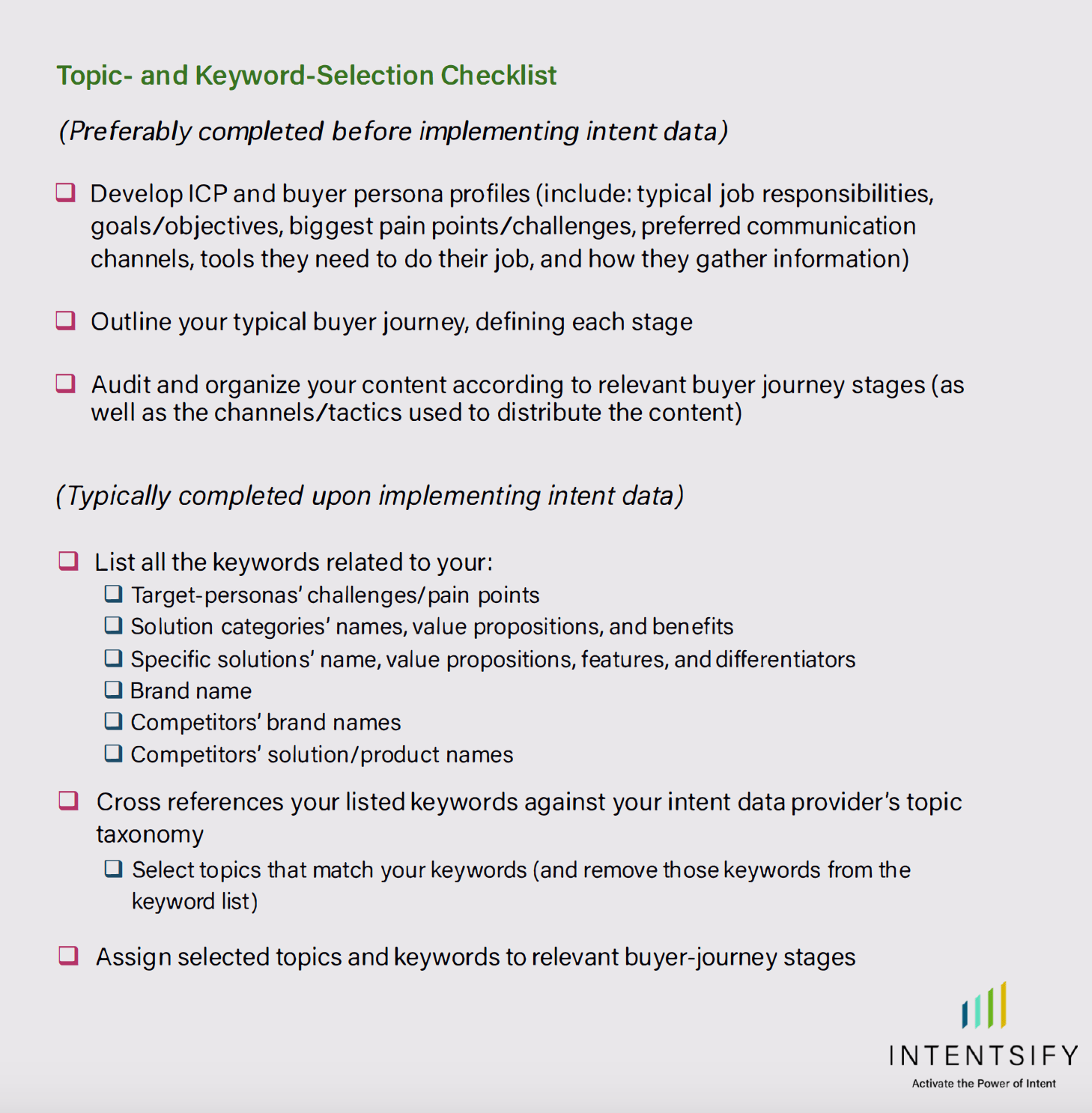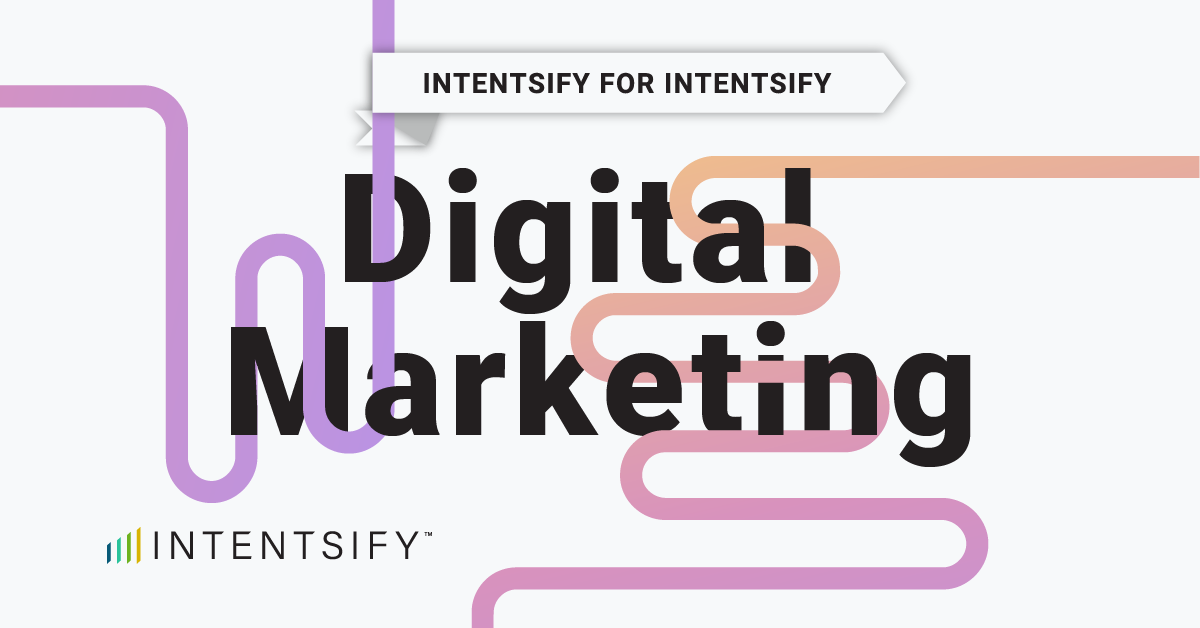Intent data is continuing to prove its value in the B2B space.
Think: revealing prospect interest in real-time = more targeted and personalized marketing campaigns and content = higher conversion rates and pipeline contribution.
Various types of intent data exist. Some intent sources offer a general, global view of target-account research activities, while others provide a more focused, niche picture. Each type is valuable in itself, but the more intent data feeds marketers leverage, the stronger the buyer intent signals are.
Further, most types derive intent by measuring businesses’ content consumption around either topics or keywords. Understanding the core differences between these two means of monitoring intent—and how you plan to use them to your advantage—is key to ensuring the success of your intent data investments (read here for a complete introduction on topics and keywords).
Once you have a firm grasp on the benefits and drawbacks of both topic- and keyword–tracking—as well as the importance of monitoring both—it’s time to start building a framework for how you plan to leverage them.
The topics and keywords you choose to monitor will largely depend on your organization’s specific needs. The below checklist should serve as a guide for what you want to have in place before and after you implement your intent data solution(s).
For more in-depth assistance on executing the checklist, make sure to refer to the guide Understanding, Selecting, and Monitoring Topics and Keywords.







